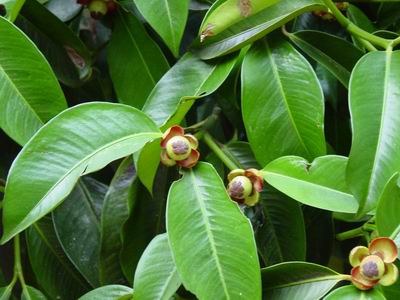Enjoy the oriental taste of this tropical fruit together with its numerous beneficial properties
What are Mangosteen Trees and Where Can I get them?
Mangosteen trees are difficult to cultivate given that they are so particular about cultivating conditions. They like lots of humidity and rain, but aren’t fond of a soggy soil. They don’t like cold or high elevations, or salt air, or sandy or silt soil. They have a preference of growing in Asia and Africa, below 200° latitude, in rain forest conditions, away from the coast, and in rich, loamy soil.
Mangosteen trees are tall, pyramid-shaped trees that probably originated in Southeast Asia. They are grown in Asia, India, Africa and some areas in Central and South America. Mangosteen fruit trees are ultra-tropical trees. They do not tolerate cold at all. Temperatures below 45°F will kill tender young trees.
You can get mangosteen from any supermarket provided they stock it, which is many cases they don't. Most people choose to purchase the juice off the internet because it is cheaper and easier to find.
The outer rind of the mangosteen fruit is thick and purple. It is full of acidic latex, and the purple juice is a permanent dye. This outer rind is also the richest source of healthful xanthones in the world. Mangosteen fruit has over 40 different xanthones.
This is one of the reasons why mangosteen fruit is so costly to purchase in America as nearly all of it has to be imported from countries that can support natural growth for these trees, more so countries like Thailand and Indonesia. One other reason why mangosteen fruit is so pricey is because it is one of the trickiest fruits in the World to grow. In essence for a tree to discharge their flowers, all conditions must be just right. numerous residents of Thailand believe that growing mangosteen is more of an art that anything and take their tasks very seriously.
Mangosteen trees like the soil to be wet but not too wet, they hate the cold, salty air and high elevations. Also the soil they prefer is not sandy or silty. Most trees grow in Rainforests where the conditions are totally ideal and you may notice them growing like wildflower in the depths of the rainforests in South East Asia.
